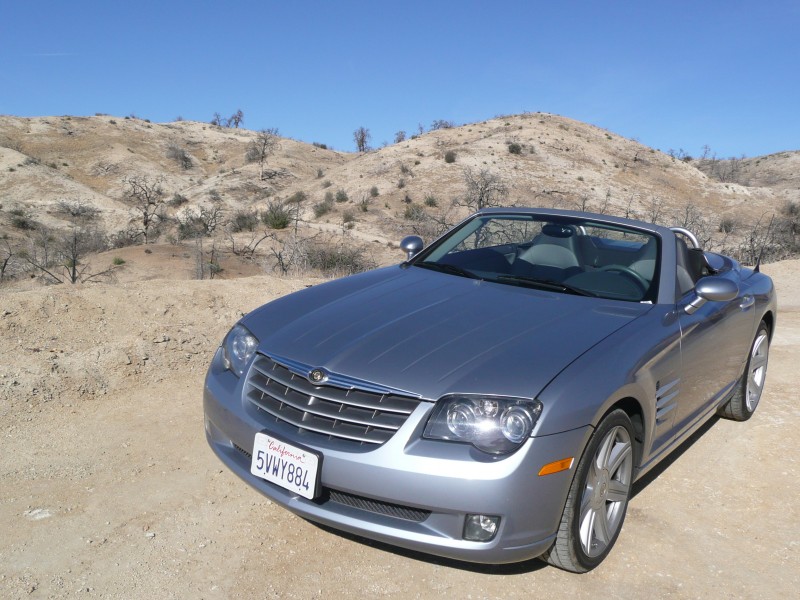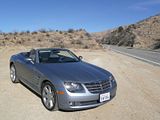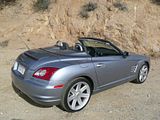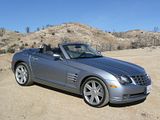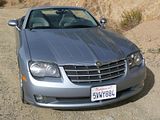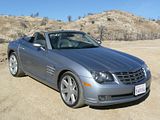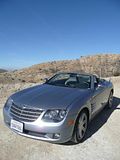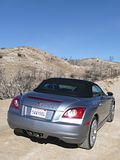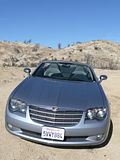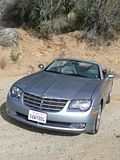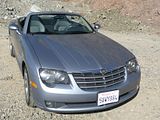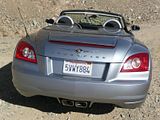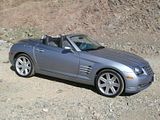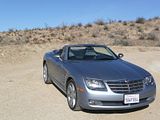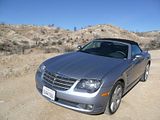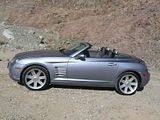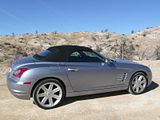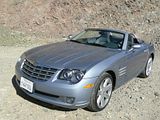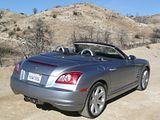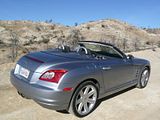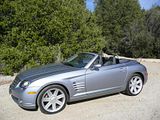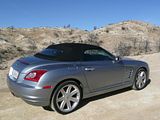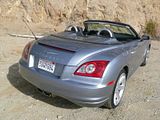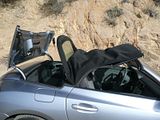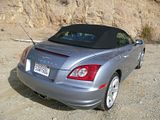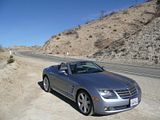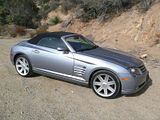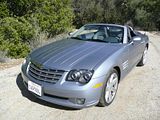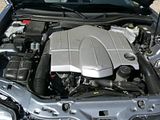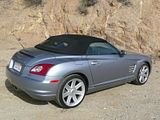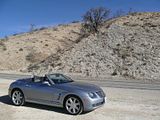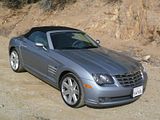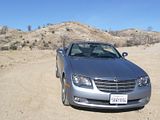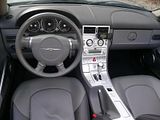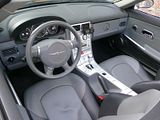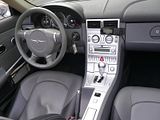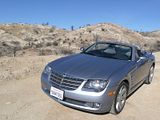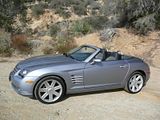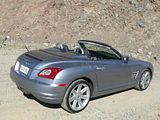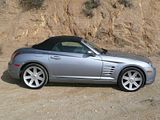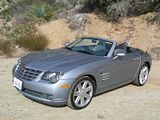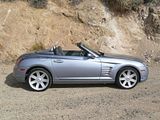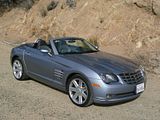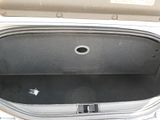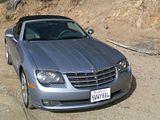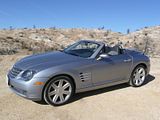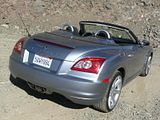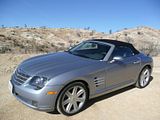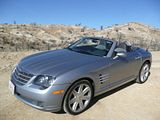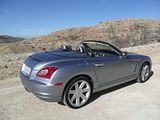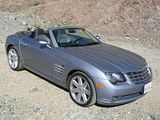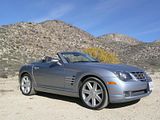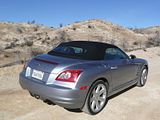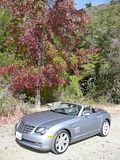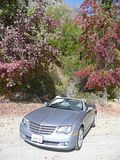For those of us used to a November in Britain, when the hours of daylight are short and falling external temperatures have us reaching for jumpers, coats and scarves as well as turning the central heating up, then somewhere like Southern California where it is still generally T Shirt weather has particular appeal. And so I have come to be very grateful for the fact that work takes me there and a welcome dose of winter sunshine. It is the low season for the area, though, which in rental car terms can mean that the fleet is still well populated, although many of the car’s have had several months of use under the wheels, with lower levels of demand meaning that upgrade deals are easier than usual to secure. So when I arrived at LAX for a week’s business trip, but with a bit of weekend time which would enable me to do more than just commute between hotel and office, I was quite eager to see if I could secure something more interesting than the mid-size saloon which I had reserved in line with corporate expense policy. I said as much to Mr Hertz’ rental car agent, asking what he might available. He initially suggested a Nissan 350Z. I had sampled one of those earlier in the year, and very much enjoyed the experience, but in the interest of sampling something else, I asked if there were other options available. Next available car showing on his list was the Chrysler Crossfire, and I did not really take any persuading that this would be an interesting choice for the week, so for a nominal upgrade fee, we completed the paperwork and the car was mine for a week.
The Crossfire is the latest of a line of Chrysler Corp products which first appeared as a Motor Show concept, and following a positive reaction from the press and public was then hastily adapted for production. The concept Crossfire was first seen at the 2001 Detroit Show. Unlike the PT Cruiser and Plymouth Prowler which were very much the modern reinterpretation of a retro theme, the Crossfire was more of a mix. Whilst the long bonnet and curvy styling elements were said to take some inspiration from classic French grand tourers of the 1930s, the end result looked largely modern in appearance. The Crossfire name, we are told, derives from one of the car’s many distinctive design cues — the character line that runs along the Crossfire’s sides from front to rear. The “X” that is created when the line crosses to a negative formation as it moves through the car’s rear fender is the “cross.” Other interesting design elements that enhance the car’s windswept look are the six “speed” lines that run the length of the car’s bonnet, and the centre spine line that moves over the length of not only the exterior, but through the interior as well. Sharing more than you might realise with the first generation Mercedes SLK sports car under the skin, the production version of the Crossfire was launched at the 2002 Detroit Show, with sales starting early in 2003 for the 2004 model year. Although billed very much as an American product. this is not a car of Detroit, but one that is produced by Karmann in Germany, on the same line as the Mercedes whose underpinnings it uses and indeed it is said that 39% of the car’s content is Mercedes in origin, mostly bits you cannot see . An open-topped version, called Roadster and the more powerful SRT-6 model joined the range a year later following their 2004 Detroit Show launches. Press reaction in the US was very positive, and sales expectations were high. With many of its most obvious market rivals coming from Europe and Asia, it was perhaps not a surprise that the decision was taken to sell the car in Europe as well.
This may have been November, but it was warm enough to drive with the roof down almost the entire week. And lowering the roof is very simple, There is a manual release on the roof above the rear-view mirror. Once that is unlatched you press the switch on the centre console and the roof will lift up and back whilst the metal cover over the stowage well lifts, and then the roof folds down into the now exposed well, with the lid then closing over the top. It certainly gives a clean look to the car with the roof down, and because the well is separate from the boot, it has no impact on luggage capacity to be driving in open-topped mode. The whole process takes just 22 seconds. With the roof down, and especially if you raise the side windows, there is no real buffeting, so you can drive even at freeway speed in this mode, with the only penalty being the fact that you won’t be able to hear the radio and you need to remember that the sun can be quite powerful even though it was November.
The Crossfire has a Mercedes engine, a 3.2 litre V6 unit to be precise, which puts out 215 bhp. Entry level Crossfire models have a six speed manual gearbox, with the 5 speed auto a cost option that is standard in the up-spec Limited trim. This being a rental car, it came with the automatic box. Twist the key to the right of the steering wheel and the sound that emanates does not sound that promising, though blip the throttle and what emerges has quite a snarly growly note to it, which sets an expectation that the Crossfire can’t quite deliver against. Probably the best way to think of the Crossfire is as quick but certainly not fast. Low-end torque is somewhat lacking, with most of the usable power available between 3,000 and 5,000 rpm. The delivery is smooth throughout, however, and the slick-shifting five-speed did help me to get the best out of the engine on the boil. Even in drop-top guise, the Crossfire felt decently stiff with no evidence of scuttle shake or rattles, so combining that with the Mercedes chassis and some large tyre and it seemed endowed with crisp handling characteristics when exercised on some of the bendy roads up in the hills north of the LA valley. The Crossfire shares the same steering set-up as in the Mercedes SLK, which means a power-assisted recirculating ball system. I thought it could have done with a little more communication as it lacked much in the way of feel, but even so, the Crossfire seemed nimble on those twisty roads making it a delight to drive. Like the SLK, the Crossfire makes use of a comprehensive stability and traction control system. It’s the first time the Mercedes system has been used on a Chrysler. And on those occasions when you merely want to cruise down the highway, the Crossfire obliges with a smooth and quiet ride. The brakes are sensitive and responsive, so the Crossfire can stop like a sports car, a result of its large 11.8-inch vented front and 10.9-inch solid rear rotors matched with massive tyres. There is a pull-up handbrake between the seats. With the roof down, all-round visibility unsurprisingly is good, as you can simply look around you and find nothing in your way. It’s a different matter with the roof up, though. There’s only a rather small rear window and an awful lot of cloth hood surrounding it so over the shoulder visibility is somewhat restricted, meaning particular care is needed at oblique junctions. Judging the back of the car is not so hard, as the tail is quite stubby.
The dash of the Crossfire has a style all of its own, with only a couple of clues to remind you of the Chrysler and Mercedes parentage. The central part of the dash contains a large silver metal-effect inlay which swoops down into the centre console. Going horizontally across the dash is a swathe of plastic which is colour co-ordinated to the exterior paintwork. As the test car was a sort of gunmetal colour which Chrysler call Machine Grey, you get a dark grey inlay on the inside which contrasts nicely with the black plastic moulding. The plastics are nothing special, but at least everything fits together quite well and there were no rattles evident despite a year’s hard rental car use. The instruments are grouped together under a single binnacle with the central speedo flanked by slightly smaller dials with rev counter to the right and water temperature and fuel level in a combined gauge to the level. The markings are clear and the dials were easy to read. Evidence of the Mercedes heritage comes from the column stalks. There are two, both on the left of the wheel, with the less-used cruise control where you would instinctively reach for an indicator stalk. This latter, which also has a twist operation for the wipers, is lower down and not so easy to find. Mercedes owners get used to this set-up but everyone else gets it wrong for a few days, and I certainly did. Lights are operated from a dial on the dash to the left of the wheel. There are no buttons on the steering wheel boss. The centre of the dash, mounted in that lengthy metal-effect inlay has a couple of small air vents and beneath these are rotary dials and buttons of the air conditioning. The audio unit is beneath this and hence lower down than is perhaps ideal, especially as the buttons to operate it are rather small and fiddly. There are then a series of buttons for things like the seat heaters. In the centre console you will find the electric window switches, which feature an auto-down but not an auto-up capability and the control to adjust the mirrors and the electric roof motor.
Like all low-slung two seater sportscars there is a knack to getting in and out. It is obviously a bit easier with the roof down, as there is no height restriction, but even so you are very much getting down into this car, so it will be a lot easier if you are still relatively athletic and agile, able to bend in all the right places. Once installed, you will want to adjust the seat which in the test car was done electrically. There is a height adjuster, but even so you need to accept that you are low down here and will definitely find yourself looking at those huge trucks that the Americans call a “semi”. Headroom is generous though, so you may prefer to set the seat a bit higher than you otherwise might. The steering column telescopes in/out as well as up/down so it was not hard to get everything in the optimum position. The seats of the test car were leather trimmed and there were seat heaters, operated by switches on the lower portion of the centre of the dash. The seat itself was comfortable.
The Crossfire Roadster is a strict two seater. There is not much space behind the front seats and indeed those of very long legs and arms may even think that the seats do not really go back far enough for them to be truly comfortable. That was not a problem I had, with my short legs meaning I need to sit quite close to the steering wheel, but even so, there was not enough clearance to put my stuff behind the seat. It was going to have to go in the boot and on standing by the car, I did wonder if I was going to have a problem with the suitcase. The tail of the car is quite short and as the retractable roof goes into a well that is separate from the boot, the luggage area is rather short from front to back. The total luggage area, although regular in shape is not large, and it was not deep enough for my suitcase which I ended up having to put in the passenger footwell for the short journey to the hotel. A slightly smaller case would have fitted, but be in no doubt that if two people are aboard they will need to pack light. You do have to lift things quite high to get them in though the size of the opening is decent enough, so you should be able to make the most of the space, unlike say a Mustang where the limiting factor is the size of the opening rather than the actual capacity. Provision for odds and ends in the cabin in just about satisfactory. There’s a modest glovebox, and shallow but quite long pockets on the doors, as well as a lidded cubby in the central area between the seats, though it is set well back so not that easy to access and a small ash tray that is more central.
A common complaint among early buyers was the Crossfire’s steep price. Chrysler addressed this for 2005 by adding a reduced-content base model with a lower sticker price. Rather than make all the deleted features optional, the loaded-up “base” model of 2004 becomes the Crossfire Limited of 2005. This was also the first year in which the Roadster model was available, also offered in Base or Limited trims. Base models are available only with a manual transmission, and come with such features as stability control; dual-zone air conditioning; a four-speaker CD stereo; cloth upholstery; a height-adjustable driver seat; a leather-wrapped steering wheel; power windows, mirrors and locks; and on convertibles, a power top with defrostable rear glass and you can recognise one by the fact that they have a black as opposed to silver-painted windscreen frame as well as lacking front fog lights. Limited models add an eight-speaker, 240-watt Infinity stereo system, power-adjustable leather seats with heaters, more sound insulation, a tyre-pressure display and various upgraded trim pieces. The standard wheel/tyre arrangement calls for 18s in front (225/40ZR Michelin Pilots) and 19s at the back (sized 255/35); buyers can get all-season tyres as a low-cost option. Also optional is a DVD-based navigation system on Limited models. Sitting above these in the range are the SRT-6 models, both Coupe and Roadster which with their 330 bhp supercharged V6 engines have a lot more power than the standard cars. Suspension and brakes are suitably upgraded to help out and there is a large rear spoiler so everyone knows that this is the more potent version and inside you get leather/alcantara upholstery.
Having read largely favourable US reviews and less enthusiastic ones from the European press, I was unsure quite what to expect from the Crossfire. My conclusions were generally quite favourable, with the fact that the top-down motoring of the week gave it a head start that was not really weakened by the emergence of any serious flaws from behind the wheel emerging during the week. For sure, if it was a straight choice between this or the Nissan 350Z that I was initially offered and which still features in the Hertz fleet, I would take the Nissan (and there is a drop top version of that available, too) but for those who want something stylish and that bit different looking that drives well, then the Crossfire has plenty to offer. Sadly, not enough buyers have agreed with me, and Chrysler’s initial sales projections of 20,000 a year has proved wildly optimistic. Indeed the test car was registered in October 2006 but turned out to have been built in August 2005. Such were the numbers of unsold cars in the US by the end of 2005 that the only version that Chrysler produced for the 2006 model year was an SE Roadster, effectively a base trim car with SRT-6 wheels and only available in red, using the time to try to clear those build but not sold cars from dealer lots, before resuming production of all variants, at a much reduced rate, for the 2007 model year. That does not augur well for much of a future for this car, so if you fancy driving one, you may need to move quite quickly whilst Hertz still have them on fleet. I was certainly pleased that I was able to take advantage of that opportunity.

